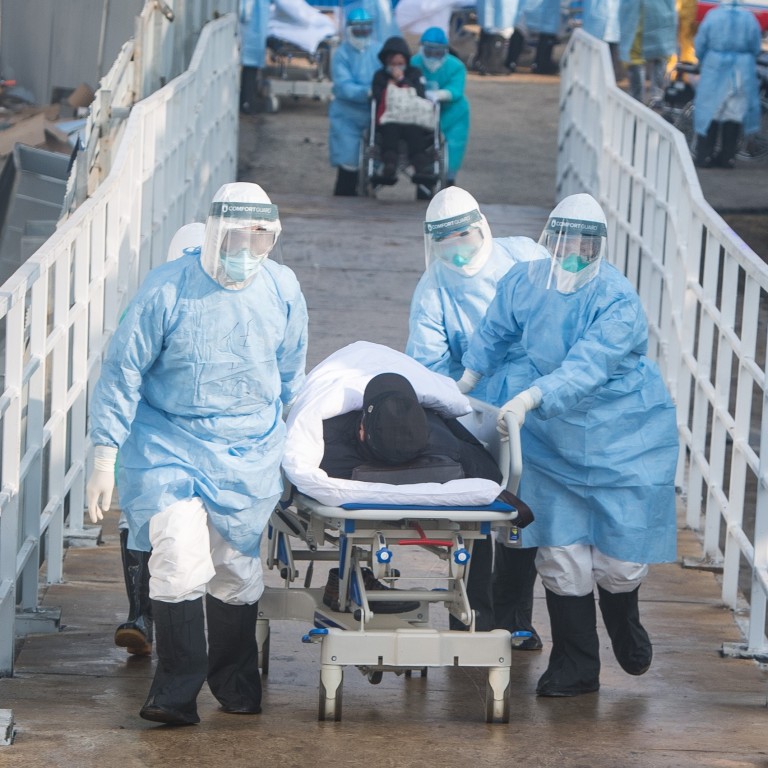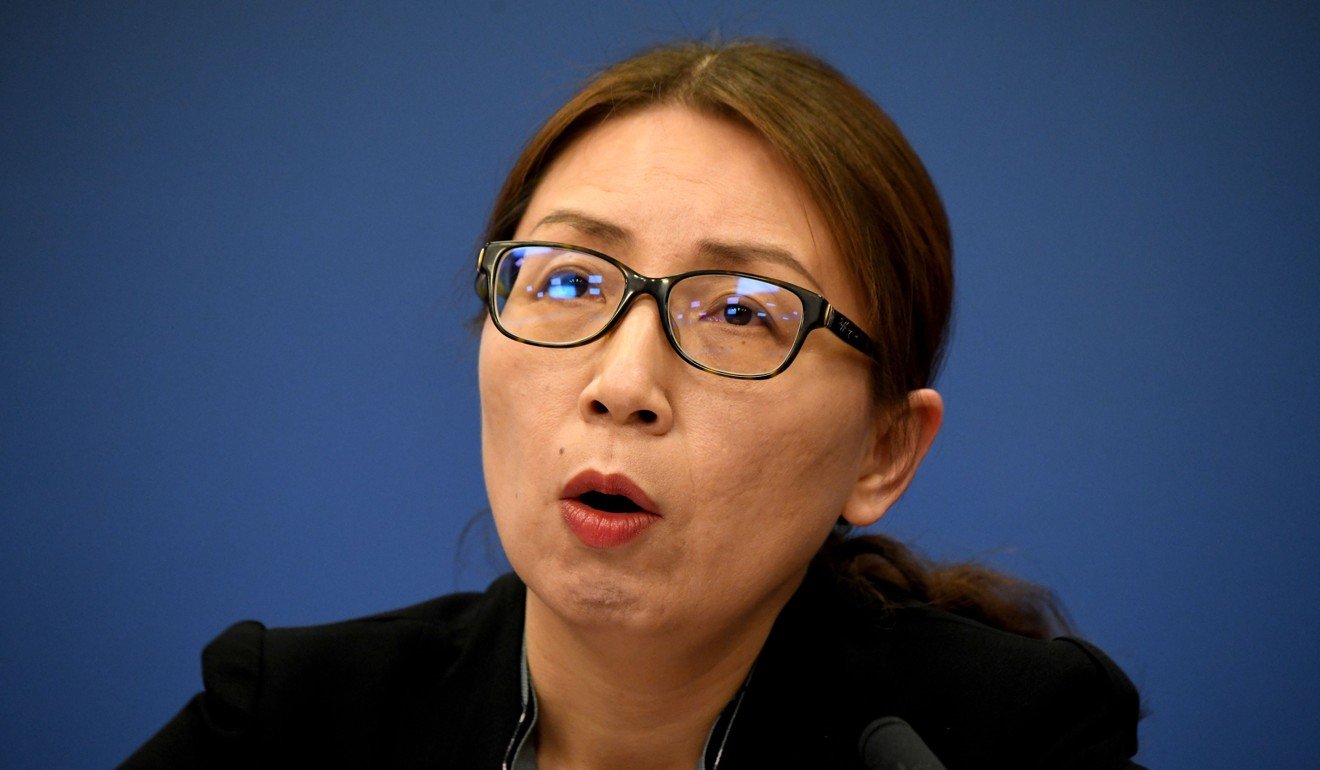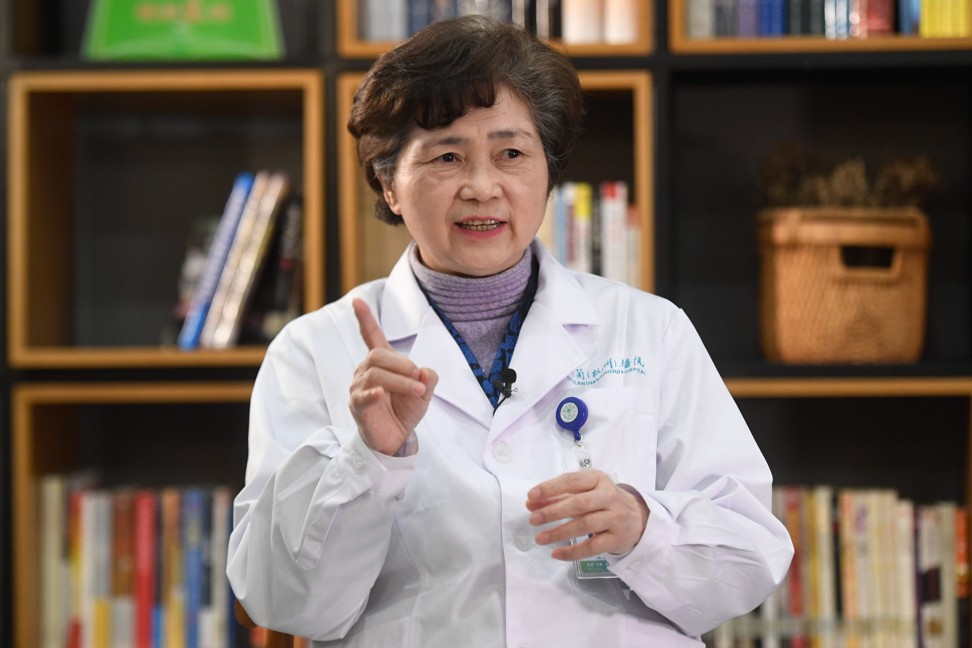
China’s health officials say priority is to stop mild coronavirus cases from getting worse
- National Health Commission admits Wuhan lacked intensive care facilities at start of the outbreak, but more beds and staff have now been provided
- And an epidemiologist says preliminary tests have shown two drugs, Arbidol and Darunavir, could effectively inhibit replication of the new strain
There are now more than 20,000 confirmed cases of the new virus on the mainland, and over 2,700 of those patients are critically ill, according to the officials. As of Monday, 425 people had died from the disease, while 738 patients had recovered after being treated in hospital.
Jiao Yahui, deputy director of the National Health Commission’s (NHC’s) Medical Administration Bureau, said the mortality rate of the viral pneumonia caused by the coronavirus was 2.1 per cent, with most of the cases in Hubei province and its capital Wuhan. The outbreak began in the city in December.
“Regarding the situation in Hubei province, the NHC has issued a directive on providing treatment to gravely ill patients with the coronavirus … requiring Hubei authorities to immediately increase the capacity to handle critically ill patients and do their best to cure the patients and lower the mortality rate,” Jiao told media in Beijing.

Meanwhile, as researchers race to find a drug to treat the coronavirus, epidemiologist Li Lanjuan said preliminary tests had shown that two antiretroviral medications, Arbidol and Darunavir, could effectively inhibit replication of the new strain.
Arbidol, commonly available as Umifenovir, is a potent antiviral used to treat and prevent influenza, while Darunavir is used to treat and prevent HIV/Aids.
Speaking in Wuhan on Tuesday, Li said she would recommend that both of the drugs be included in the next national treatment plan for Chinese hospitals, the official Changjiang Daily reported.
Other drugs being tested in animal experiments and human clinical trials in China included Remdesivir, chloroquine phosphate and Favipiravir, Sun Yanrong, deputy director of the biology centre under the Ministry of Science and Technology, told the press briefing in Beijing.

“We look forward to the results of these tests and it is expected that a shipment of the medicine [for the clinical trials] will arrive in China [on Tuesday].”
Antiviral Remdesivir was originally developed for Ebola and severe acute respiratory syndrome (Sars), while chloroquine phosphate is an antimalarial drug. Favipiravir is a broad-spectrum experimental antiviral drug.
Jiao said clinical data had shown traditional Chinese medicine could also play a role in alleviating the symptoms of virus patients.
She also admitted that Hubei, and Wuhan especially, lacked the intensive care facilities needed for severe cases at the start of the crisis, meaning a number of them were being treated across more than a dozen hospitals in the city that were not equipped to cope with the extra patients.
Wuhan has since upgraded three hospitals so they can handle an additional 1,000 critically ill patients in total, Jiao said. That was on top of the three hospitals designated to treat the virus patients, which have a combined total of 110 hospital beds for the purpose.
She said more than 3,000 doctors and nurses from across the country had been mobilised to look after coronavirus patients in Wuhan.
Coronavirus tally in epicentre Wuhan may be ‘just the tip of the iceberg’
In addition, a panel of specialists headed by Li and other leading epidemiologists Zhong Nanshan and Wang Chen would provide consultation support to the doctors.
“They will help assess the condition of patients and review treatment plans, and recommend hospital transfers if necessary,” Jiao said.
With more facilities and medical staff available, Jiao said she was confident that more infected patients would recover in the coming weeks.
Excluding Hubei province, the average mortality rate of the disease in China is 0.16 per cent, with males accounting for two-thirds of the death toll, according to Jiao. More than 80 per cent of those who died were over 60 years old, and over 75 per cent of them had more than one underlying health problem such as diabetes, she said.
Coronavirus ‘could spread widely through Hong Kong’ as three new cases confirmed
Coronavirus patients spent an average nine days in hospital before being discharged in mainland China, she said, again excluding Hubei. “Many patients don’t have to stay in hospital for too long, and that indicates that our treatment has been effective,” Jiao said.
For Hubei, the average hospital stay was 20 days, as the province had stricter discharge procedures that require patients to stay an extra 10 days for observation, and they must twice test negative for the virus before they can return home.
Virology expert Hitoshi Oshitani, with the Tohoku University Graduate School of Medicine in Japan, said more data is needed to assess the recovery rate.
“This virus is different from Sars-CoV, which caused severe illness in most infected patients. It appears that many patients have relatively mild illness. These relatively mild cases may recover after one week or so,” Oshitani said, referring to the global epidemic in 2002-03 that killed more than 800 people.
Hong Kong-based infectious disease specialist Joseph Tsang Kay-yan said the recovery rate could be improved.
“We hope the time needed to explore a more effective drug regimen can be shortened as understanding of the disease increases,” Tsang said.
“But early diagnosis and treatment to stop progression of the illness and slow organ damage is still the key here. The worst thing in China now is that many patients are not getting diagnosis and treatment in time because of the lack of hospital beds to accommodate an overwhelming patient volume,” he said.


